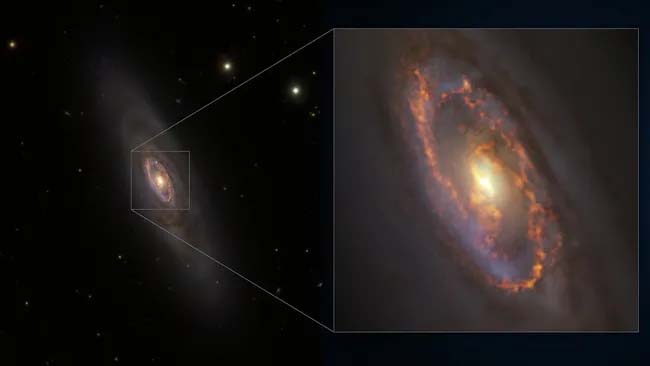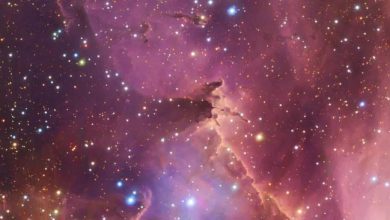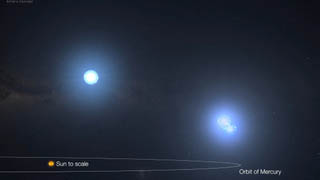Unusually simultaneous star formation observed in ancient galaxy for the first time

Science: Astronomers have observed thousands of young stars around the center of an ancient galaxy, all formed simultaneously about 4 million years ago. The observation is the first time such simultaneous star formation has been seen in an old galaxy, and it challenges the idea that star formation decreases as galaxies age.
The newly found star clusters surround the heart of NGC 1386, a spiral galaxy spinning in the constellation Eridanus about 53 million light-years from Earth. The researchers, led by Almudena Prieto of Spain’s Instituto de Astrofisica de Canarias, identified 61 clusters of young stars that trace the 1 kiloparsec-wide blue ring seen in the image above, and found that they all had similar masses, ages and sizes despite being spatially isolated.
“All these clusters are distributed like beads on a ring around the center of the galaxy,” Prieto said in a recent news release. “Surprisingly they are all so similar, leading to the idea that they were formed at the same time, in a synchronous event.”Observations of the blue ring with the Hubble Space Telescope and the VLT Survey Telescope in Chile suggest that the star clusters are nourished by long filaments of gas and dust that carry precious star-forming material — such as molecular hydrogen — from the galaxy’s outer disk to its center.
The researchers did not detect any companion galaxies swirling around NGC 1386, suggesting that these filaments are likely the only source of star-forming material for the galaxy, according to another news release from the European Southern Observatory (ESO), which hosts the VLT Survey Telescope at its Paranal Observatory in Chile’s Atacama Desert.
These findings add to growing recent evidence that some older galaxies are capable of hosting bursts of star formation, in contrast to most historical observations, which have shown that galaxies’ star formation rates decrease as they age, suggesting that their supply of star-forming gas and dust diminishes. Despite its age, “this galaxy has organized itself to obtain the necessary supply from its outer regions, within its stellar disk,” Prieto said.





